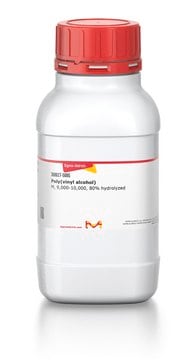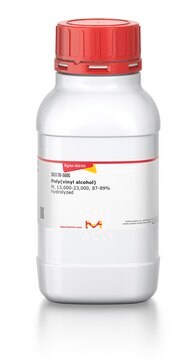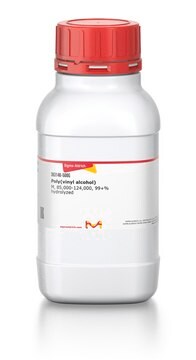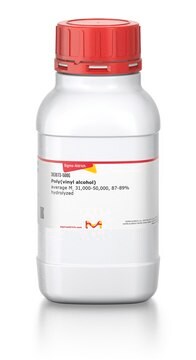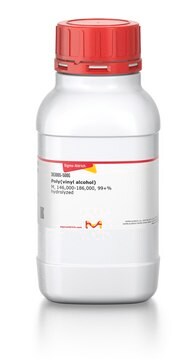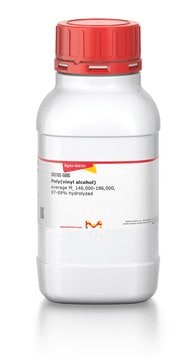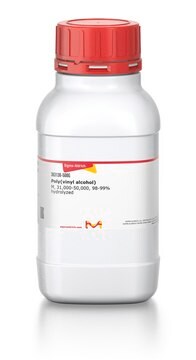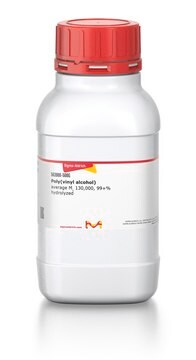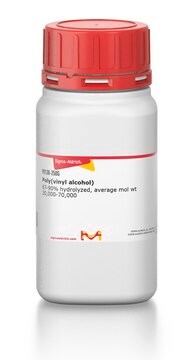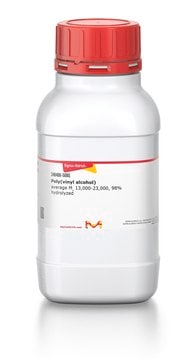363081
Álcool polivinílico
average Mw 85,000-124,000, 87-89% hydrolyzed
About This Item
Produtos recomendados
forma
powder or crystals
peso molecular
average Mw 85,000-124,000
Queda de bola
23-27 cP, 4 % in H2O(20 °C)(lit.)
InChI
1S/C2H4O/c1-2-3/h2-3H,1H2
chave InChI
IMROMDMJAWUWLK-UHFFFAOYSA-N
Procurando produtos similares? Visita Guia de comparação de produtos
Categorias relacionadas
Descrição geral
Aplicação
PVA can be used as a surface stabilizer in preparing drug delivery carriers for the slow release of tetracycline.
Highly concentrated alginate/polyvinyl alcohol (PVA) bioinks can be used to prepare 3D bioprinting porous scaffolds. Partial diffusion of PVA sols from printed scaffolds creates a large number of micropores.
PVA can also be used as a water-soluble polymer template to synthesize nanosized polypyrrole via in situ polymerization. PVA generates stable dispersions of polypyrrole nanospheres in water and the size of nanospheres depends on the molecular weight and concentration of PVA.
Código de classe de armazenamento
11 - Combustible Solids
Classe de risco de água (WGK)
WGK 1
Ponto de fulgor (°F)
No data available
Ponto de fulgor (°C)
No data available
Equipamento de proteção individual
Eyeshields, Gloves, type N95 (US)
Certificados de análise (COA)
Busque Certificados de análise (COA) digitando o Número do Lote do produto. Os números de lote e remessa podem ser encontrados no rótulo de um produto após a palavra “Lot” ou “Batch”.
Já possui este produto?
Encontre a documentação dos produtos que você adquiriu recentemente na biblioteca de documentos.
Os clientes também visualizaram
Nossa equipe de cientistas tem experiência em todas as áreas de pesquisa, incluindo Life Sciences, ciência de materiais, síntese química, cromatografia, química analítica e muitas outras.
Entre em contato com a assistência técnica
